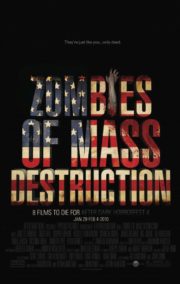Into the Abyss of Isolation: A Review of Queen of Earth
“In the end, it was all about fear. Fear of being alone. Fear of losing everything.”
*Queen of Earth*, directed by Alex Ross Perry and released in 2015, invites viewers into the tumultuous psychological landscape of its main character, Catherine (played by Elisabeth Moss). Following a devastating breakup and struggling with her mental health, Catherine retreats to a family lake house, where the boundaries of reality and sanity begin to deteriorate amid the earthy constraints of isolation. This unsettling psychological horror film dives deeper into the abyss of personal despair and navigates the complexities of human relationships, making it a chilling exploration of emotional instability.
Building a Chilling Atmosphere
Alex Ross Perry meticulously crafts a sense of horror in *Queen of Earth* through a combination of suspenseful storytelling, psychological tension, and the impending doom that hangs over the characters. Throughout the film, there’s an undercurrent of foreboding, amplifying the viewer’s anxiety not just through startling moments but by weaving an unsettling narrative that exploits the inherent human fear of loneliness and rejection.
The horror atmosphere materializes chiefly from Catherine’s starkly emotional breakdown against the stunning but isolating visuals of the lake house. The deliberate pacing elicits a slow creep of dread that festers as the viewer witnesses the unraveling of Catherine’s mind. The film masterfully utilizes silence and stillness to emphasize her sense of despair, leveraging the inherent discomfort in prolonged solitude to build a horror that is both personal and universally relatable.
Ultimately, *Queen of Earth* proves that horror can emerge not just from the fear of the supernatural, but from the erosion of one’s own mind—a nuanced commentary on the fragility of mental health and the risks of retraction into darkness.
Visual Aesthetics and Tension
Perry’s direction emphasizes a unique visual style, manipulated through dim lighting and a muted color palette that heavily reflects Catherine’s psychological state. The cinematography, courtesy of Sean Price Williams, shifts between claustrophobic close-ups and expansive landscape shots, capturing both the intimacy of Catherine’s mental decline and the isolating vastness of her environment.
The camera angles are pivotal; they often linger uncomfortably on Catherine’s face, exposing the depths of her despair in a way that feels invasive, amplifying the viewer’s connection—or disconnection—during her mental unraveling. The use of handheld shots gives the film a raw, visceral quality, making each emotional swing from joy to dread feel immediate and palpable.
Special effects are minimal, focused instead on the compelling performances and the reality of the characters’ emotional turmoil. This decision allows the viewer to remain grounded in a sense of authenticity, as fear emerges from character interactions rather than supernatural disruptions.
The Sound of Dread
Sound plays a critical role in building the horror atmosphere of *Queen of Earth*. The sparse soundtrack, punctuated by haunting melodies and eerie silences, works in tandem with diegetic sounds to accentuate the intensity of moments. As the film progresses, the sound design shifts from serene lakeside birds to jarring and unsettling echoes, highlighting Catherine’s emotional disorientation.
The absence of sound stands out during pivotal scenes — moments when silence looms as heavily as a scream. The lack of auditory distraction allows the viewers to focus on Catherine’s inner turmoil, creating an uncomfortable stillness that sends shivers down the spine. In contrast, bursts of jarring music come alongside sudden emotional outbursts, effectively startling the audience and heightening the tension in such an intimate setting.
Overall, the film’s soundscape elevates its psychological horror elements, ensuring that the audience is not merely watching but experiencing a visceral sense of dread alongside Catherine.
Performance Under Pressure
Elisabeth Moss delivers an extraordinary performance in her portrayal of Catherine, successfully capturing the complexities of a woman spiraling into madness. Her raw portrayal oscillates between vulnerability and volatility, allowing viewers to experience her tumultuous emotional landscape.
Moss embodies the essence of fear—the fear of rejection, the fear of isolation, and the terror of losing one’s grip on reality. Each gasp, tear, or moment of laughter feels terrifyingly real, drawing the audience deeper into her psyche. The supporting cast, particularly Katherine Waterston as her friend Ginny, amplifies the tension; their relationship dynamic shifts from supportive to antagonistic, reflecting the instability that accompanies deep emotional anguish.
The authenticity of the characters’ responses to their situations invites an emotional investment that intensifies the horror of their interactions. This isn’t merely a film about external terror; it’s about the horrors that dwell within, making the performances not just believable but haunting.
Navigating Psychological Horror
With its examination of mental health, *Queen of Earth* firmly fits into the psychological horror subgenre. The film explores not only Catherine’s outward struggles but also delves into the insidious nature of her inner demons—an exploration of personal fears and emotional turmoil that transcend conventional horror tropes.
Themes of jealousy, loneliness, and the state of personal relationships serve as a rich canvas for the narrative, challenging typical horror conventions. The film nurtures an atmosphere that feels both familiar and foreign, as the horror arises not from monsters, but from the fragility of the human mind and the fear of interpersonal disconnect.
Furthermore, the isolation inherent in the film raises questions about reality itself. As layers of characters’ motivations unravel, viewers are left to grapple with the notion of perception and the shadows of our psyche that can lead us closer to madness.
Methods of Fright
The methods used within *Queen of Earth* to induce fear are decidedly psychological and atmospheric, relying heavily on emotional tension and character dynamics rather than gore or sudden scares. The horror is subtle yet effective, crafted through the disintegration of relationships and the intrusion of self-doubt that plague Catherine’s mind.
For viewers expecting jump-scares or graphic violence, this film may prove more unsettling in its implications than in its execution of traditional horror. Moments of shock do punctuate the film; however, the true terror lies in the drawn-out exploration of self-deception and fear.
The use of implication and suggestion further enhances the film’s horror, leaving audience members questioning what they’ve perceived long after viewing. This psychological haunt remains, melding into personal reflection and leaving an eerie resonance.
Deeper Themes Beyond the Fear
*Queen of Earth* is a reflective exploration of mental health and relationships. It delves into the societal expectations placed on women grappling with emotional turmoil, allowing the narrative to serve as a mirror to the struggles that many endure in silence. The isolation of the setting functions as a microcosm for the internal battles experienced within oneself.
Moreover, the film’s climax challenges romanticized notions of love and companionship, laying bare the fears and realities that can corrode even the closest relationships. Catherine’s descent serves as a cautionary tale, asking viewers to consider their own emotional well-being amidst expectations.
By intertwining these deeper themes with the core horror elements, *Queen of Earth* transcends the traditional boundaries of horror, elevating itself as an essential watch for those willing to confront the darker aspects of the human experience.
A Final Verdict on the Descent
In conclusion, *Queen of Earth* is as unsettling as it is thought-provoking. It offers a compelling glimpse into the nature of psychological horror, successfully marrying character-driven storytelling with haunting visuals and a foreboding atmosphere. The interplay of sound and silence combined with the raw performances creates a film that resonates far beyond its runtime.
While *Queen of Earth* might not satisfy all horror aficionados looking for a conventional fright-fest, it proves effective for viewers seeking something rich in psychological depth and emotional horror. The film is best suited for those who appreciate explorative horror that challenges the mind rather than simply shocking it.
As such, it may serve as a cautionary story for those struggling with mental health issues or those who wish to understand the fragility of relationships on a fundamental level. Viewer discretion is advised due to themes of mental illness and emotional instability, ensuring it resonates deeply for the right audience without unjustly alienating others.
Overall, *Queen of Earth* is a crafted horror experience, deserving of respect and consideration from anyone looking to probe the darker corners of human emotion while confronting the essence of fear itself.




